You don’t need any special modem for a gigabit connection, however, the one you get should be capable of handling a peak 1000 Mbps throughput. This means it should not only incorporate a 1 Gbps Ethernet port but also be able to handle gig internet plans.
Apart from speed, you must also ensure it’s compatible with your service provider, has a phone jack if you need telephone connectivity, and supports the latest networking traits such as DOCSIS 3.1, 32 downstream, and 8 upstream channels.
Not to mention, practical performance is what matters the most. So, to suggest you the best, I’ve thoroughly tested 13 devices with 1 Gig package from major ISPs, and come up with in-depth reviews of the top 6 performers.
Whether you’re subscribed to Xfinity, Spectrum, Cox, or any other internet provider, you’ll find a perfect match here. Also, each cable modem in this list caters to specific needs, users, and budgets. So, without further ado, let’s dig in.
Contents
1. Best Overall: Netgear CM2050V
Looking to future-proof your network with something that supports plans higher than 1 Gbps? The CM2050V is one such option with voice support.
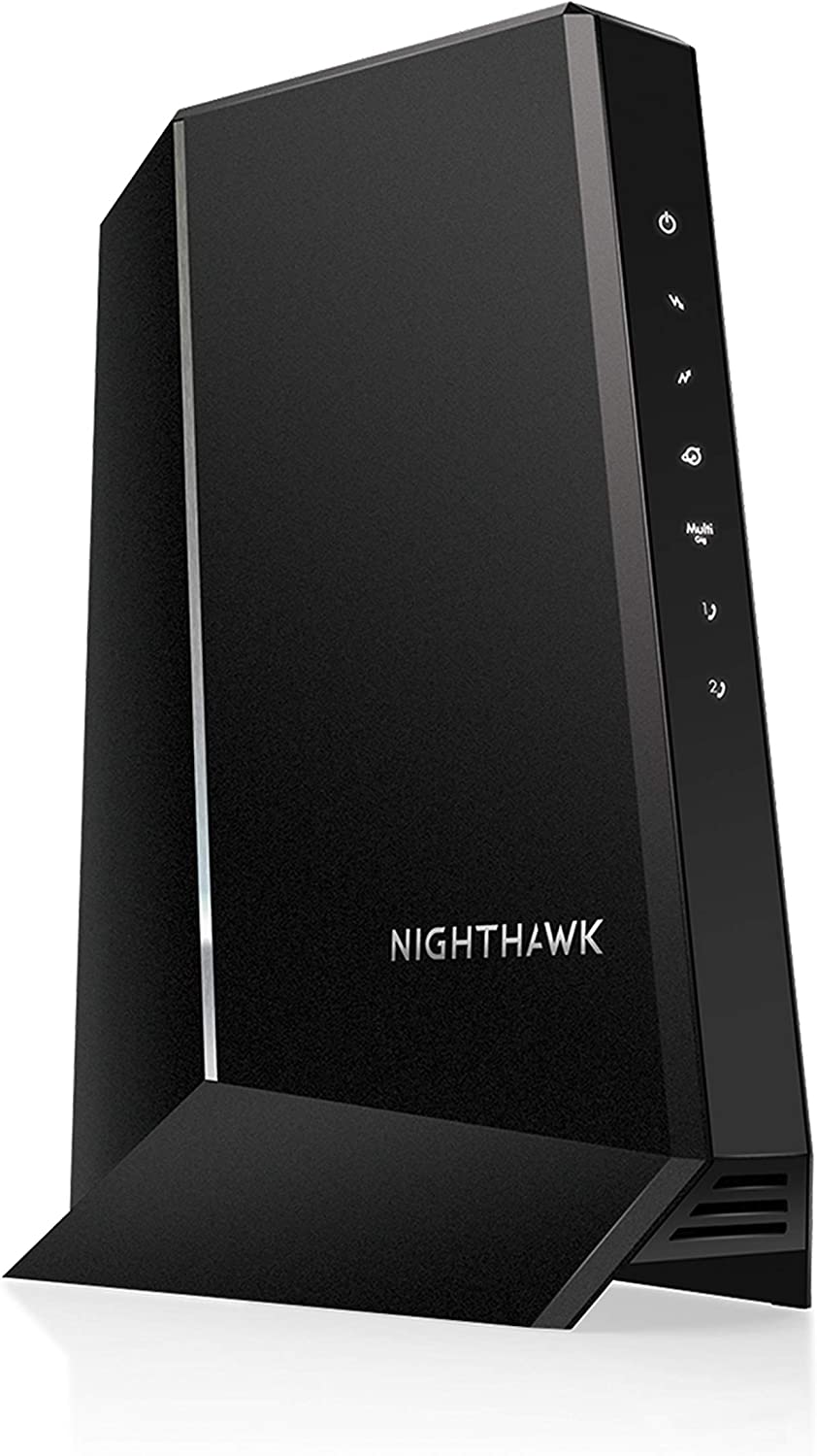
- Technology: DOCSIS 3.1
- Downstream/Upstream: 32 x 8
- Compatible ISPs: Xfinity Voice and Internet
- Ports: 1 x 2.5 Gig Ethernet & 2 x Phone
- Modem-Router Combo: No
If you’re here scouring for a modem with high-end specifications to deliver the best of performances with your Gigabit Intenet + Voice bundle, Netgear CM2050V is your best bet. Some of its top features include DOCSIS 3.1, 32 x 8 channel bonding, two telephone ports, and a 2.5 Gbps ethernet port for internet plans up to 2500 Mbps.
There are some major upgrades over its predecessor, CM1150V, for improved performance.
Speeds & Performance
To determine if the device lives up to its promises or not, I conducted several speed tests by pairing it with the Nighthawk RAXE500 router and paired it with Xfinity’s 1.2 Gbps internet package.
In the proximity test at about 20 feet, my iPad Pro could yield 1027 Mbps in download and 46 Mbps in upload speeds.
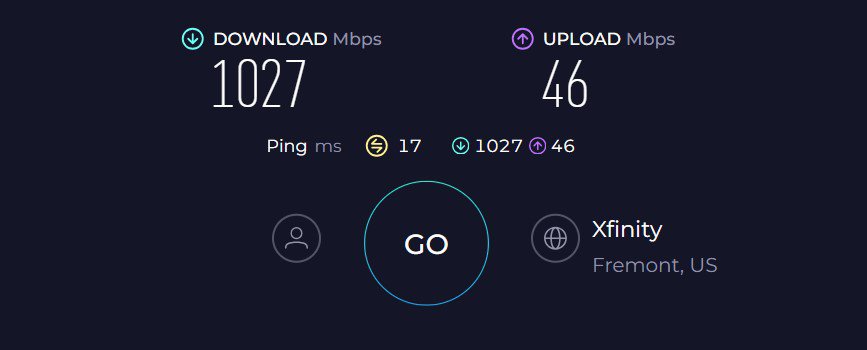
And moving to a 50 feet distance, respective values raked 512 Mbps and 23 Mbps.
Note: The values were impressive, but note that they might alter from one router to another.
Nevertheless, the available speeds are more than suitable for any setting, commercial or traditional, and are viable for any low-ping gaming, high-speed streaming, multi-device browsing, and more. The best part, there weren’t any signal lags or drops.
Ports & Connectivity
Netgear CM2050V didn’t go for anything critical. For starters, a power port and coaxial port connect the modem to the router and power.
A 2.5 Gig WAN port is there for gamers to achieve multi-gigs of speeds and less than 15ms ping for an unmatched gaming experience.
Other than that, there are two telephone ports where you can connect your landline and enjoy features like caller ID, conference calling, call forwarding, and more.
Conclusion
Overall, Netgear CM2050V is a top-shelf DOCSIS 3.1 2.5G modem to fare well with your gigabit and multi-gigabit plans. Its voice connectivity and robust performance should glide you through the high-bandwidth tasks without much fuss.
Besides, it’s one of the most aesthetically pleasing cable modems with standard physical traits, several indicative lights, and a sturdy stand. Full review here.
- Future-proof
- Powerful hardware setup
- Supports multi-gig speeds
- Two telephone ports
- Appealing design
- Premium price
- Lacks multi-ISP compatibility
2. Best Runner-Up: ARRIS SB8200
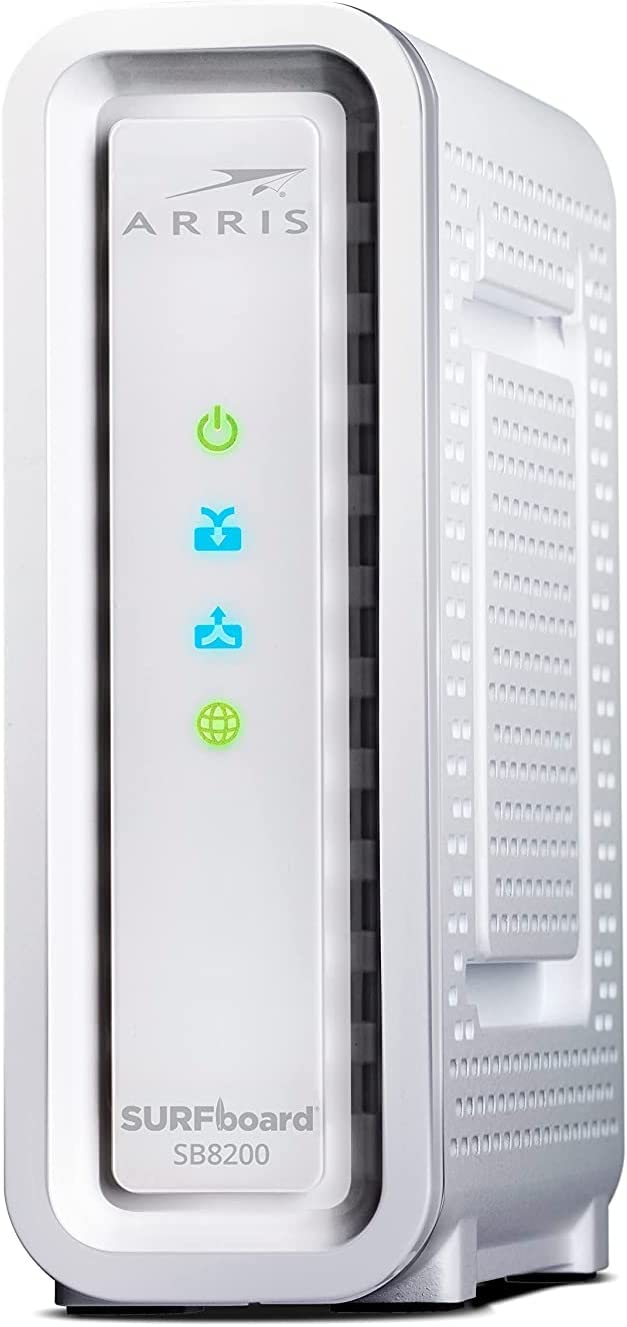
- Technology: DOCSIS 3.1
- Downstream/Upstream: 32 x 8
- Compatible ISPs: Xfinity, Spectrum, Cox, Mediacom, WOW, Midco, and Sparklight.
- Ports: 2 x Gig Ethernet
- Modem-Router Combo: No
ARRIS SB8200 is one of the top-rated DOCSIS 3.1 cable modems in the retail space. It makes a lot of sense if you want a reliable device that provides consistent throughput. It replaces the Intel Puma 6-powered SB6190 and brings significant improvements and reliable performance.
Speeds & Performance
While there are quite a few reasons to get it, DOCSIS 3.0 fallback makes it more relevant. The 32 x 8 channel bonding support and the max speed limit of 1 Gbps ensure compatibility with major ISPs offering relevant internet packages.
I paired it with TP-Link Archer AX90, a powerful WiFi 6 router on the Cox Gigablast plan. Every time I ran a speed test, the results were similar. My iPad was clocking 928 Mbps in download and 39 Mbps in upload. These are impressive.
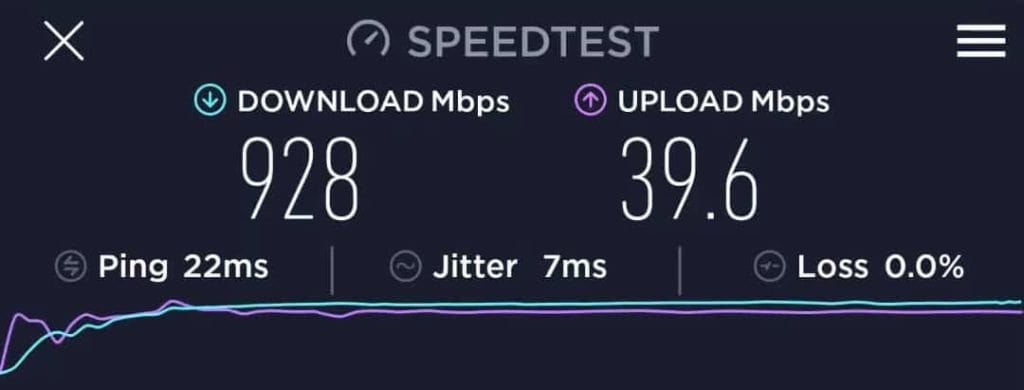
And unlike my previous pick, this modem works well with multiple internet service providers, including Xfinity, Cox, Spectrum, Mediacom, WOW, Midco, and Sparklight. So, if you switch the ISP in the future, SB8200 has got your back.
Ports & Connectivity
The device sports two high-speed Ethernet ports. What’s important to note is that while one port can feed the corresponding router, the other Gigabit port can cater to any bandwidth-intensive device like a gaming console, smart TV, or more.
The SB8200 also supports Link Aggregation, meaning you can connect the throughput of both ports to reach multi-gig speeds, provided the ISP provides you with two IPs.
Conclusion
ARRIS SB8200 is quite a powerful modem to pair with Gigabit connections. If you are into gaming, streaming, or other intensive activities, just go for it. The right balance between specs, performance, and price makes SB8200 my runner-up pick.
For more specific information about this device, refer to its dedicated review.
- Stable network performance
- Faster data packet transmission
- Compatible with multiple ISPs
- Link aggregation support
- Four OFDM channels
- Reasonable price
- Gets warm sometimes
3. Best for Gaming: Motorola MB8600
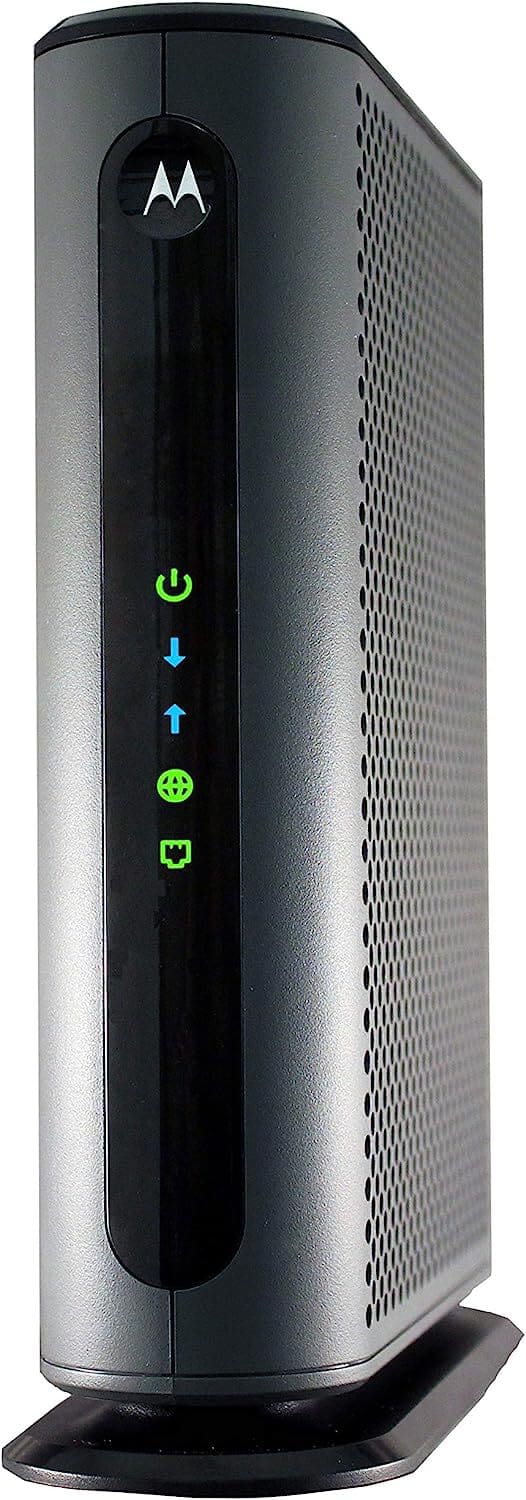
- Technology: DOCSIS 3.1
- Downstream/Upstream: 32 x 8
- Compatible ISPs: Xfinity, Cox, Spectrum, Sparklight, Optimum, Mediacom, and Midco.
- Ports: 1 x Gig Ethernet
- Modem-Router Combo: No
Motorola MB8600 is one of the better options for gaming, courtesy of AQM (Active Queue Management) and DOCSIS 3.1 support. And if you want an upgrade over the existing MB7621, this one seems like the perfect Gigabit modem to invest in.
Note: The successor of this modem, MB8611, is already out. But then, it’s meant for multi-gig connections, and the other things remain the same as MB8600.
Speeds & Performance
There are quite a few reasons to pick this one for Gig plans, but what makes the most sense is the 32 x 8 channel bonding support, courtesy of the DOCSIS 3.0 fallback.
Upon testing it with Spectrum’s Internet Gig plan, the modem connected with the ASUS RT-AX88U router was clocking 907.69 Mbps of download speed and 35.05 Mbps of upload speed. So, rest assured, you’ll experience true Gigabit speed with MB8600.
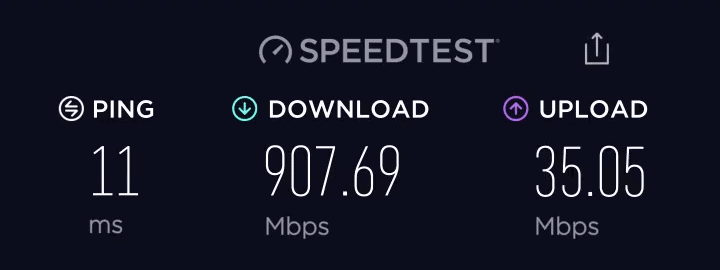
Speeds apart, the performance is top-notch too. With AQM set up, my PS5 was running very smoothly, and I didn’t face any lags or frame drops. This is why it’s tagged as one of the top modems for gaming.
Ports & Connectivity
This is where things get a bit low for the MB8600. Motorola makes room only for one Gig ethernet port. However, like SB8200, it supports Link Aggregation and is meant to boost the throughput, provided the ISP shells out multiple IPs.
Therefore, with the MB8600 in play and the ISP upgrading speeds, you can make sure that the wireless setup easily reaches close to gigabit speeds. Plus, it even has IPv6 support for better network prioritization.
Conclusion
It wouldn’t be wrong to state that the Motorola MB8600 is a simple yet powerful, useful, and easy-to-setup cable modem on the list. And most importantly, it outpaces other products around, courtesy of its powerful link aggregation support.
For more details, check the in-depth review of the MB8600.
- DOCSIS 3.1 powered
- AQM for reduced latency
- Great ventilated design
- Useful LED indicator lights
- Powerful internals
- Only one ethernet port
4. Best Modem/Router Combo: ARRIS G34
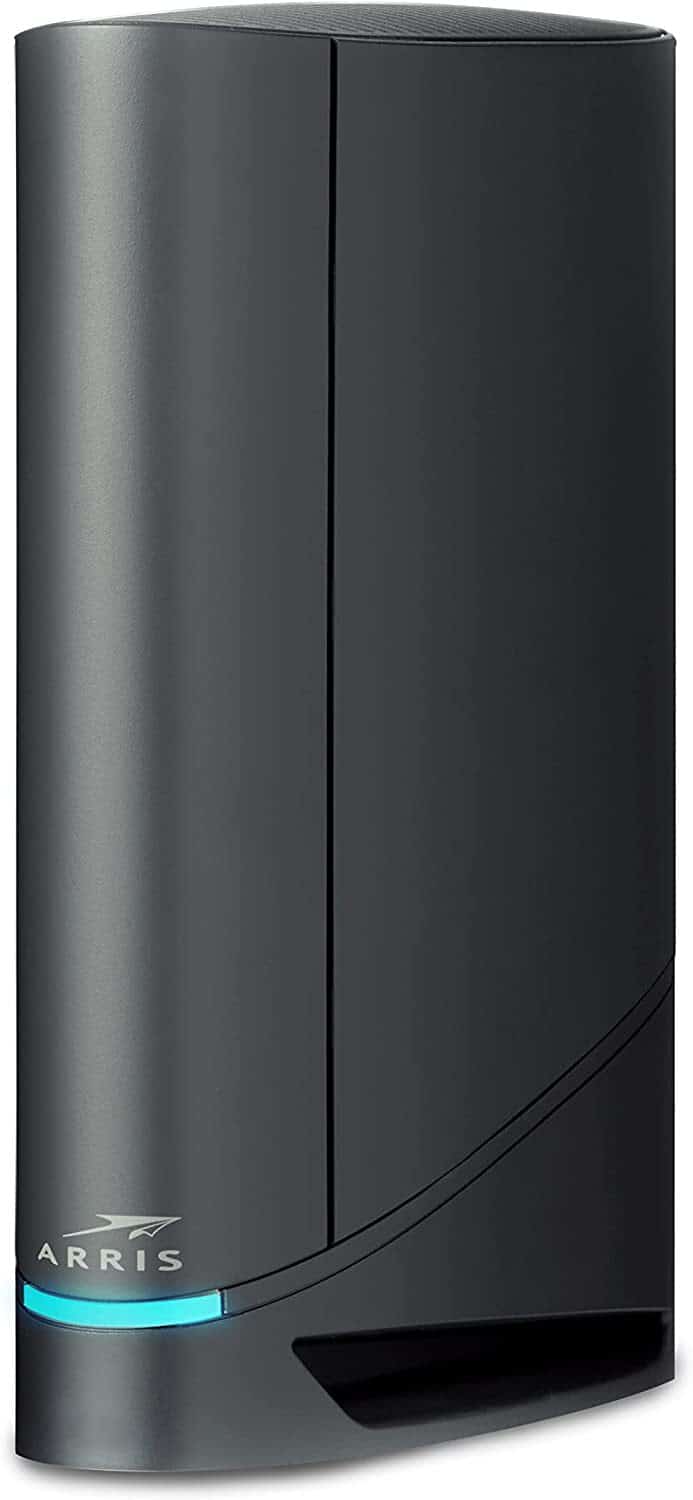
- Technology: DOCSIS 3.1
- Downstream/Upstream: 32 x 8
- Compatible ISPs: Xfinity, Spectrum, Cox, Sparklight, and WOW Internet
- Ports: 4 x Gig Ethernet
- Modem-Router Combo: Yes
- Wireless Standard: Wi-Fi 6
- Router Speed: AX3000
- WiFi Range: Up to 2,000 Sq Ft
While standalone modems work better, certain users can benefit from a 2-in-1 device that makes things easy. ARRIS G34 is one such gigabit-capable modem/router combo that includes both a high-end modem and a Wi-Fi 6 router.
And if you have been using the SBG8300 from the same company, the G34 is a huge upgrade with a better processing unit, throughput capacity, and WiFi signal quality.
Speeds & Performance
SURFboard G34 is the perfect combo device for use with Gigabit internet, as once purchased, you do not have to account for the compromised speeds exhibited by the router. Instead, the modem side of the G34 accepts the coaxial cable, and the router end transmits the highest possible wireless speeds, regardless of the band.
What’s interesting is that it comes with DOCSIS 3.1 tech, 3.0 fallback, and 32 x 8 channel bonding support. On top of that, this device is compatible with the most popular cable ISPs like Xfinity, Spectrum, and Cox.
As far as wireless connectivity is concerned, the G34 from Arris acts as an AX3000 wireless router, allowing you to reach max 5 GHz speeds of up to 600 Mbps and 2.4 GHz speeds of up to 150 Mbps.
Upon testing this device with the Cox Gigablast plan, my iPad was getting almost 838.74 Mbps in download and close to 33.76 Mbps in upload.

These are excellent speeds considering it’s a combo device. This is why it’s ranked #3 in my modem/router combo list.
Ports & Connectivity
This 2-in-1 combo sports four Gig Ethernet ports that can be used to connect directly with some of the more bandwidth-intensive home devices. And the link aggregation support allows you to maximize the wired throughput significantly.
Conclusion
All in all, ARRIS SURFboard G34 is a great value buy for those who need easy-to-set-up and manage internet equipment. If you want to learn more, you may check out the full review or comparison with G36.
- Advanced networking traits
- Decent wireless speeds
- Decent WiFi coverage
- Four Ethernet ports
- Powerful hardware
- Multi-ISP support
- No USB port
- Heats up a bit
5. Best for Streaming: Netgear CM1100
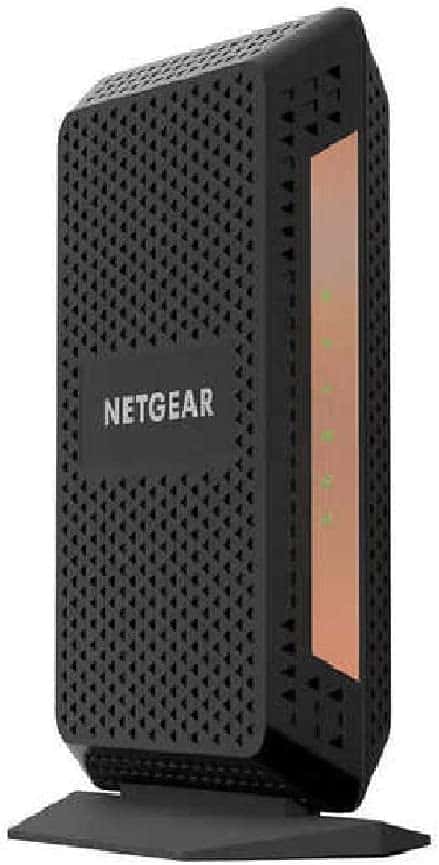
- Technology: DOCSIS 3.1
- Downstream/Upstream: 32 x 8
- Compatible ISPs: Xfinity, Cox, RCN, Spectrum, Suddenlink, and Mediacom.
- Ports: 2 x Gig Ethernet
- Modem-Router Combo: No
Netgear CM1100 is one of the most efficient modems, boasting powerful hardware and top-shelf networking technologies with multi-gig speed claim. And when it comes to the overall package, it is quite an upgrade over the CM1000.
Speeds & Performance
The CM1100 promises max speeds of up to 2 Gbps, but due to ethernet ports’ limitations, it can only offer 1000 Mbps of throughput.
Nonetheless, the device offers great speeds, courtesy of the DOCSIS 3.1, and 3.0 fallback, and the availability of 32 x 8 channels support for faster connections.
Next in line is the multi-ISP compatibility with Netgear extending support for Cox, Comcast, Charter, Spectrum, and a handful of other cable service providers.
When paired with WOW Internet’s Gig service plan, my MacBook could reach 897 Mbps of download speed and 39.5 Mbps of upload speed.
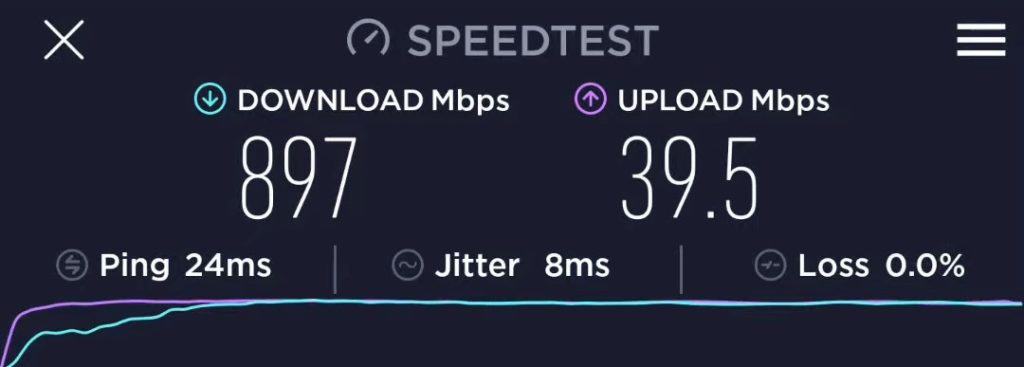
Ports & Connectivity
There are two GigE ports in play, with Link Aggregation support. Also, you can connect one port to the router and experience Gig-level speeds on any other device via a wired connection.
Conclusion
Netgear CM1100 deserves no mention, as it’s already one of the more mainstream choices. However, the stable operation makes it one of the better choices in 2023. For a closer look, check out the dedicated Netgear CM1100 review.
- Light and portable
- Good for 1080p streaming
- Affordable
- Fast chipset
- Not as fast as other products on the list
6. Best Budget Option: Hitron CODA
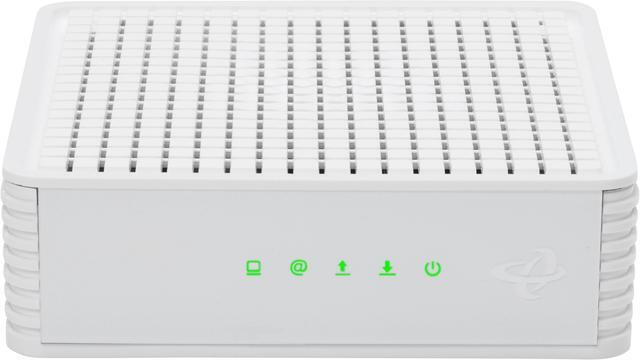
- Technology: DOCSIS 3.1
- Downstream/Upstream: 32 x 8
- Compatible ISPs: Xfinity, Cox, Comcast Business, Breezeline, Spectrum, Astound, and Sparklight
- Ports: 2 x Gig Ethernet
- Modem-Router Combo: No
Dropping to the end of my list is a budget-friendly yet dependable modem that you can use with a Gigabit connection. Hitron CODA, although not the most popular manufacturer, managed to secure the rank in my list courtesy of affordability and compatibility with several internet providers.
Speeds & Performance
Despite being a budget option, Hitron CODA is DOCSIS 3.1 compatible. In my speed tests with Cox Gigablast with TP-Link AXE75 router, it delivered impressive results.
Connected to WiFi, my Samsung Tab S9, kept at 20 feet, could attain speeds of up to 782 Mbps for downloads and 33 Mbps for uploads. Meanwhile, moving away at 50 feet dropped to 529 Mbps and 22 Mbps, respectively.

So, the available speed should get you through most online-based tasks, be it gaming, streaming, video conferencing, and others, with ease.
Ports & Connectivity
The Port setup of Hitron CODA is rather decent, with a coaxial and power port to connect with the router and power. Besides, there are two Ethernet ports with a maximum of 1 Gbps capacity which translates to power-packed performance over the connected devices. But there are no telephone ports for added calling features.
Conclusion
Hitron Coda, coming for just $100, turns out a great modem that establishes a perfect balance of features, performance, and cost. The speeds were good enough to tackle most corporate or household tasks with prowess.
Surprisingly, the hardware is powerful enough to ensure no lags, latencies, or heating. But the lesser popularity of the brand and unfamiliar after-sales support is the reason I’ve put it in the last position.
- Two Gigabit Ethernet ports
- Works with most ISPs
- Powerful hardware setup
- Cost-effective solution
- Not so popular brand
Key Notes from the Author:
- A standalone modem + separate router is a better setup for performance and flexibility. But it can be more expensive. Learn more.
- If you opt for a standalone cable modem, you must also have a gigabit internet router to make the connection wireless.
Frequently Asked Questions
Well, the one that offers the highest internet speed limits by offering extensive link aggregation support is the best in play. This is why, if I were to make one choice, I would stick with the Netgear Nighthawk CM2050V.
If your modem doesn’t offer 32 x 8 channel bonding support, you might have to replace it and get one with 32 x 8 channels.
Yes, despite offering DOCSIS 3.1 functionality, most modern-day modems support fall back to DOCSIS 3.0 for standard Gig-level internet plans. Therefore, DOCSIS 3.0 is acceptable, provided the modem has 32 x 8 channels.
Verdict
Each of the modems on the list makes quite a good case and caters to a pretty targeted clientele. However, if you are still unsure about picking the best for your home or office, here are some use cases and the relevant picks that help you decide better:
- Opt for the Netgear CM2050V if you want to experience multi-gig speeds and high-quality telephone connectivity.
- If you often indulge in gaming, get the Motorola MB8600, as it offers the lowest possible latency. Thanks to AQM functionality and powerful hardware.
- ARRIS G34 is the best value pick courtesy of 2-in-1 functionality with high-end specs and affordability.
- Lastly, go with Hitron CODA if you’re on a tight budget yet need a reliable modem to pair with your gig-level connection.

Thank you so much for such great content. I am seeking to build a home network with Unify equipment, including access points and cameras. Can I please get your help